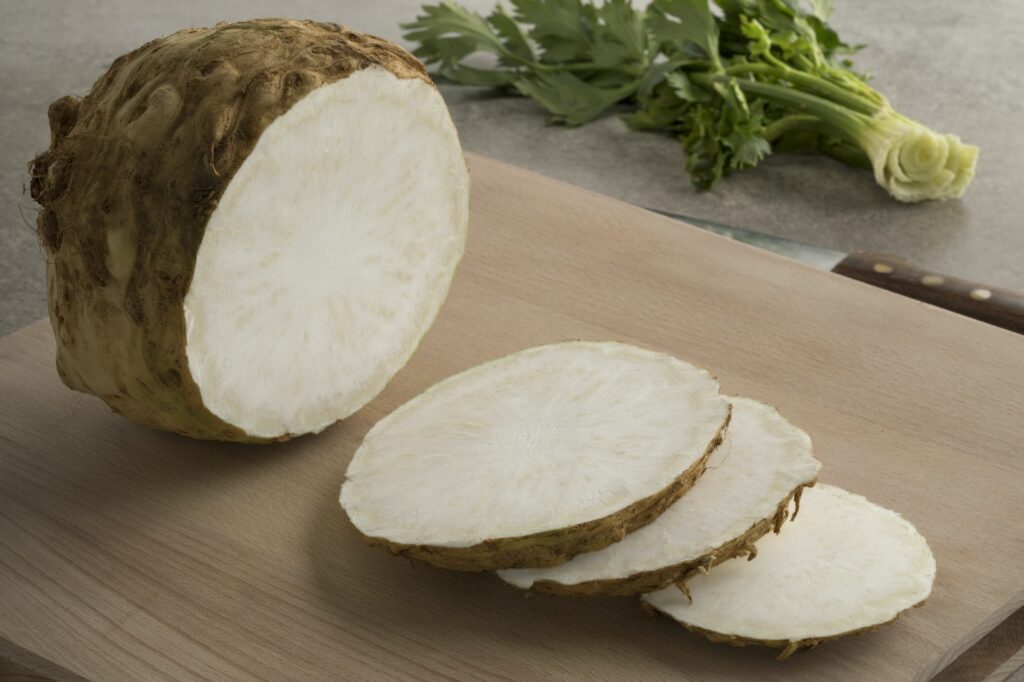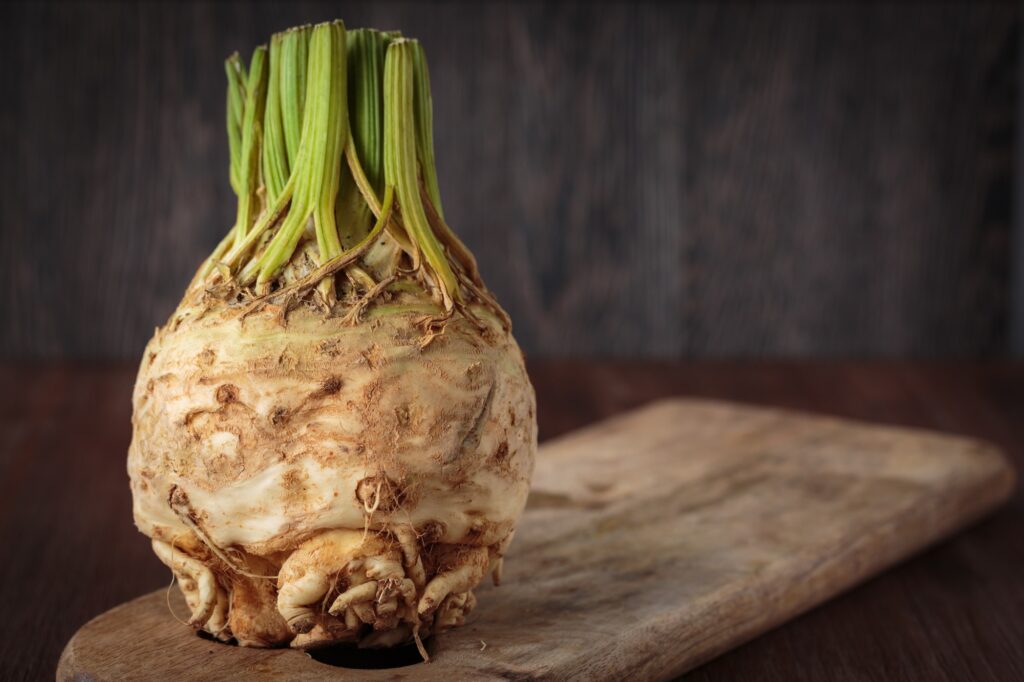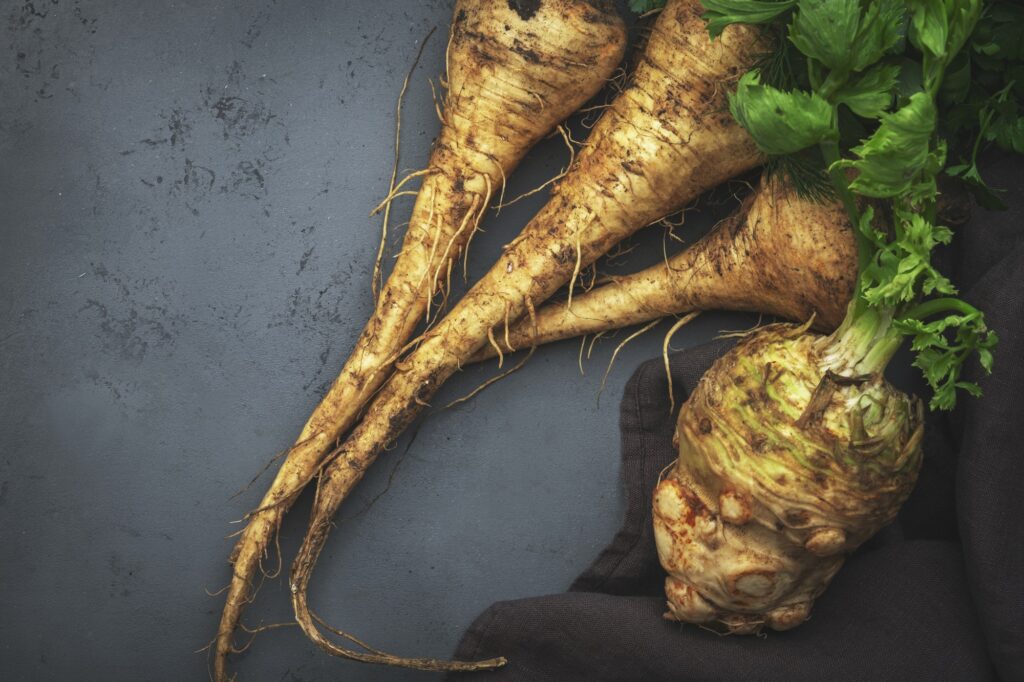11 Interesting Facts About Celeriac

Introduction
Celeriac is an uncommon vegetable in many parts of the world, leading some home cooks and consumers to overlook it at the market. However, this knobby, bulbous root has much to offer in terms of nutrition, taste, and culinary potential.
Celeriac originated in the Mediterranean region and has been used in European cuisines for centuries. Both the ancient Greeks and Romans utilized celeriac for medicinal and religious purposes. Today, it remains popular in French, German, and other European dishes.
From its unique appearance to its subtle, celery-like flavor, celeriac is full of surprises. Read on to uncover 11 fascinating facts about this hearty, healthy root vegetable.

1. Celeriac Has a Rough, Bumpy Exterior That Belies Its Inner Beauty
At first glance, celeriac looks rather unappetizing and downright odd. It has a lumpy, gnarled exterior covered in knotty protrusions and brownish skin. However, beneath this rough and scaly surface lies a creamy white flesh with a tender, potato-like texture.
When trimmed and cut, the inside of the celeriac resembles a turnip. It has a mild taste redolent of celery, with delicate earthy undertones. Though homely on the outside, celeriac is beautifully edible within.
2. Celeriac Offers a Nutrient-Dense Source of Vitamins and Minerals
Despite its low-calorie content, celeriac provides a wealth of important vitamins, minerals, and phytochemicals. It’s especially high in vitamin K, supplying over 50% of the recommended daily value per cup. Vitamin K supports bone and heart health.
Celeriacs also contain vitamin C, an antioxidant that boosts immunity and helps make collagen. It’s a good source of B vitamins like vitamin B6, plus minerals like phosphorus, potassium, and manganese. The many nutrients in celeriac support overall wellness1.
3. Its Subtle, Celery-Like Flavor Enhances Many Culinary Dishes
The flavor of celeriac is often described as a cross between celery and parsley. When raw, it has a stronger, more pronounced celery taste. When cooked, celeriac develops a subtle, mildly sweet flavor with earthy notes.
This versatile vegetable works well in a wide array of dishes. Its celery-like taste adds depth and interest to soups, stews, purees, and more without overpowering other ingredients. Celeriac also pairs well with cream, cheese, garlic, herbs, and spices.
4. Celeriac Can Be Enjoyed Raw or Cooked in Endless Culinary Creations
From traditional European dishes to innovative modern recipes, celeriac brings versatility to the kitchen. It can be grated raw into refreshing salads, roasted until caramelized and crispy, or mashed and pureed into velvety creations.
Celeriac is commonly used in French cuisine in dishes like céleri rémoulade, a tangy slaw, as well as in German potato salads. It also shines in roasted and mashed forms as a flavorful, low-carb alternative to potatoes.
5. When Cooked, Celeriac Develops a Creamy, Smooth Texture

In its raw state, celeriac has a dense, crunchy flesh similar to carrots or jicama. However, when steamed, boiled, or roasted, it transforms into a smooth, creamy delight.
The cooked flesh of celeriac is almost velvety in texture, making it perfect for pureeing into soups, sauces, and mashes. It can also be boiled and mashed like potatoes. This versatility allows celeriac to suit both hearty and elegant culinary creations.
6. Celeriac Adds Depth and Sophistication to High-End Dishes
In addition to homey soups and stews, celeriac is valued in haute cuisine and gourmet cooking. Its refined flavor profile and creamy smooth texture make it ideal for elevating refined dishes.
Top chefs utilize celeriac in exquisite purees, velvety smooth sauces, and delicate accents. It brings a level of depth and elegance to high-end culinary creations.
7. Celeriac Goes by Many Alternative Names
This vegetable is known by several interesting alternate monikers. In addition to celeriac and celery root, it may also be called knob celery or turnip-rooted celery.
In some regions, celeriac is referred to as ‘root celery.’ These creative names all refer to the same humble yet versatile vegetable.
8. Celeriac Inspires Culinary Creativity in Infinite Dishes

From traditional European fare to contemporary haute cuisine, celeriac brings versatility and intrigue to the kitchen. Chefs and home cooks alike enjoy experimenting with its unique flavor.
The subtle, sophisticated taste of celeriac lends itself to seemingly endless culinary experiments. It can transform everything from a simple soup to a complex gourmet dish with its wildly flexible flavors.
9. Celeriac Makes an Excellent Low-Carb Alternative to Potatoes
For those looking to reduce their carb intake, celeriac is an excellent substitute for starchy potatoes. It contains about a third of the carbohydrates of a russet potato, with only 4 grams of net carbs per 100 grams.
Mashed, fried, or roasted, celeriac gives a similar creamy, satisfying mouthfeel to potatoes. Using it in place of potatoes allows you to cut back on carbs without sacrificing taste or texture.
10. Celeriac Provides a Wealth of Benefits for Digestive Health
Like other high-fiber foods, celeriac helps promote healthy digestion in myriad ways. Its 3 grams of dietary fiber per cup feeds beneficial gut bacteria and adds bulk to stools.
This root vegetable also contains antioxidants and anti-inflammatory compounds that help reduce inflammation throughout the body, including the digestive tract. The many nutrients in celeriac team up to support gastrointestinal health.
11. Celeriac Is Highly Nutritious Yet Low in Calories
One of the things that makes celeriac so appealing is its stellar nutritional profile despite a low-calorie count. Per cup, it contains just 42 calories yet is packed with vitamins, minerals, antioxidants, and fiber.
For those watching their waistlines, celeriac makes an excellent low-calorie addition to any dish. It provides bulk and nutrients without adding excess calories.

What is celeriac?
Celeriac, also known as celery root, is a root vegetable with a rough, bumpy exterior and a creamy white inside. It has a subtle taste reminiscent of celery and is used in various culinary dishes.
How do you prepare celeriac?
To prepare celeriac, first, peel off the tough outer skin, then you can slice, dice, or grate it as desired. It can be enjoyed either raw or cooked, depending on the recipe.
What are the health benefits of celeriac?
Celeriac is low in calories but rich in vitamins and minerals such as vitamin K, vitamin C, B vitamins, and essential minerals like potassium and manganese. It is also a good source of dietary fiber.
Can celeriac be used as a substitute for other ingredients?
Yes, celeriac can be used as a low-carb alternative to potatoes and is excellent in dishes like purees, soups, and salads where you might otherwise use root vegetables.
Where can you buy celeriac?
Celeriac is available at many farmers’ markets, health food stores, and supermarkets, especially during the fall and winter months when it is in season.
Conclusion
Though it may never win a beauty contest, celeriac more than compensates with its wealth of nutrients, subtle flavor, and extraordinary culinary versatility. This knobby root vegetable brings far more to the table than meets the eye.
From its immune-boosting vitamins to its creamy low-carb versatility, celeriac is an unsung hero of the produce aisle. Next time you spot this homely yet wholesome vegetable, give it a chance – it just might become your new favorite root!





